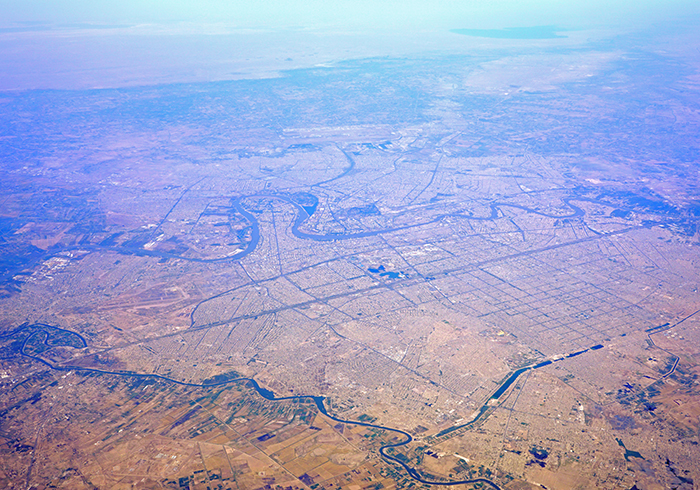Egypt’s trade outlook is improving amid macroeconomic reforms and export momentum. In this market overview, the team at Arab African International Bank (AAIB) reflects on the momentum behind the country’s transformation into a regional hub for production, investment and growth.
Market overview
Egypt’s trade landscape is showing tangible signs of structural improvement, despite ongoing global headwinds and persistent regional tensions. The positive momentum built in late 2024 has carried into 2025, driven by improved FX availability, a narrowing trade deficit and stronger export performance. While the deficit remains a long-term challenge, recent shifts in the trade balance, supported by targeted reforms and private sector adaptability, signal a more resilient and sustainable trade environment taking shape.
Higher export volumes and reduced import pressures have characterised Egypt’s trade performance in early 2025. This improvement reflects rising foreign demand for Egyptian goods underpinned by enhanced competitiveness and stronger global positioning. Contributing to this development are improved macroeconomic conditions and government-led initiatives such as the export subsidy programme and trade facilitation reform.
Macroeconomic fundamentals have strengthened in parallel. Last year’s record foreign direct investment inflows and the March 2024 exchange rate unification allowed the Central Bank of Egypt to adopt a more flexible, market-driven FX regime. The result has been stronger FX availability, a far more orderly currency market and fading currency weakening expectations, reduced inflationary pressures in the domestic market and improved price competitiveness of Egyptian exports.
These dynamics have had a wide-reaching positive impact across the economy, bolstering confidence and supporting recovery. International reserves are rebuilding, banks’ net foreign assets positions have turned positive, and headline inflation is now trending downward, allowing the Central Bank of Egypt to start a cautious monetary easing cycle. Nonetheless, the inflation outlook remains subject to further market developments.
With the foreign currency shortage now largely subdued and import restrictions lifted, production bottlenecks have eased, and banks are again able to meet corporate FX demand directly. Businesses are benefitting from the improved market conditions, contributing to the increased export activity in the observed period. Additionally, the non-oil Purchasing Managers’ Index moved back into expansionary territory in early 2025, signalling continued recovery in the private sector. Trade facilitation reforms and a revamped export subsidy programme are further supporting this shift.
At the sector level, building materials, engineering goods and textiles are leading export growth. On the other hand, we are witnessing a notable reduction in imports of wheat and cars, in alignment with the government’s goal to substitute key imports with domestic production. Nevertheless, such performance remains subject to both internal and external market dynamics and risks.
AAIB has moved quickly to adapt to the more supportive conditions. Leveraging its strong market expertise and international network of banking relationships, the bank has expanded its trade finance offerings from usance payable at sight letters of credit to supply chain finance, helping clients convert renewed market stability into improved working capital and cross-border growth.
Opportunities
Egypt, a major economic power in Africa and the Arab world’s largest market and population, aims to capitalise on its strategic location for international trade. It is leveraging shifting global supply chains to further attract investment and reinforce its status as a regional hub for production, re-exporting and nearshoring.
The country is actively deepening its regional and global integration. Participation in the African Continental Free Trade Area is translating into actionable opportunities, particularly through pilot digital customs corridors between Alexandria and Nairobi, and Damietta and Lagos. These initiatives are reducing non-tariff barriers and facilitating smoother access to fast-growing African markets.
Meanwhile, Egypt’s recent admission into the BRICS bloc is opening new avenues for trade settlement using alternative currencies such as the Chinese yuan and Indian rupee.
This shift is reducing foreign exchange volatility and making bilateral trade more efficient.
Egypt has implemented a comprehensive export strategy focusing on significantly boosting exports in the near term. Key areas include infrastructure and logistics development, value addition and an improved investment climate. Enhancements to the export rebate programme are encouraging more Egyptian exporters to integrate into the global value chain.
New growth frontiers are shaping Egypt’s trade and economic scene, highlighting promising opportunities in the green economy, digitalisation, energy and manufacturing. Notable milestones include the recent inauguration of the world’s largest textile factory equipped with state-of-the-art facilities, which has revitalised Egypt’s textile industry and contributed to its recent growth. Moreover, Egypt’s automotive industry is witnessing growing export potential, supported by the National Automotive Industry Development Program, which aims to significantly increase the local component composition in production.
Egypt is one of the few countries to turn the ongoing US tariffs into a competitive advantage. The competitiveness of Egyptian apparel and clothing exports to the US market is expected to increase, positioning Egypt as a potential alternative to traditional Asian suppliers.
Its geographic position, combined with significant port capacity and growing bonded logistics zones, continues to reinforce its role as a regional gateway for goods moving between Asia, Europe and Africa. Egypt is increasingly serving as a regional consolidation point for multinationals, and the growth of its re-export trade is supporting job creation and foreign currency inflows.
Challenges
Despite the clear progress, Egypt continues to face persistent barriers to unlock its full trade potential due to geopolitical tensions. The Suez Canal, a vital trade artery, saw a significant drop in revenues due to geopolitical tensions, affecting Egypt’s foreign currency inflows.
Egypt’s trade landscape in 2025 presents both substantial opportunities and notable challenges. While these challenges are real, they are being met with proactive strategies. With a continued focus on resilience, reform and diversification, Egypt is increasingly well-positioned to withstand external shocks, sustain growth and reinforce its status as a major player in the global trade market.








